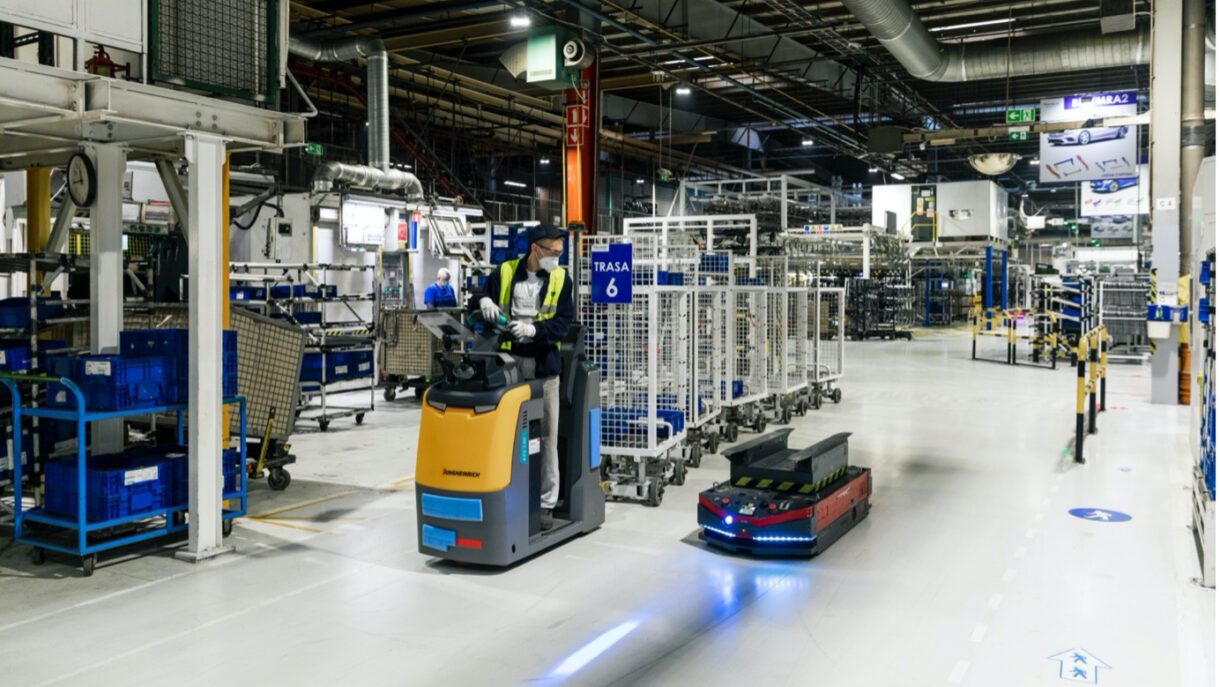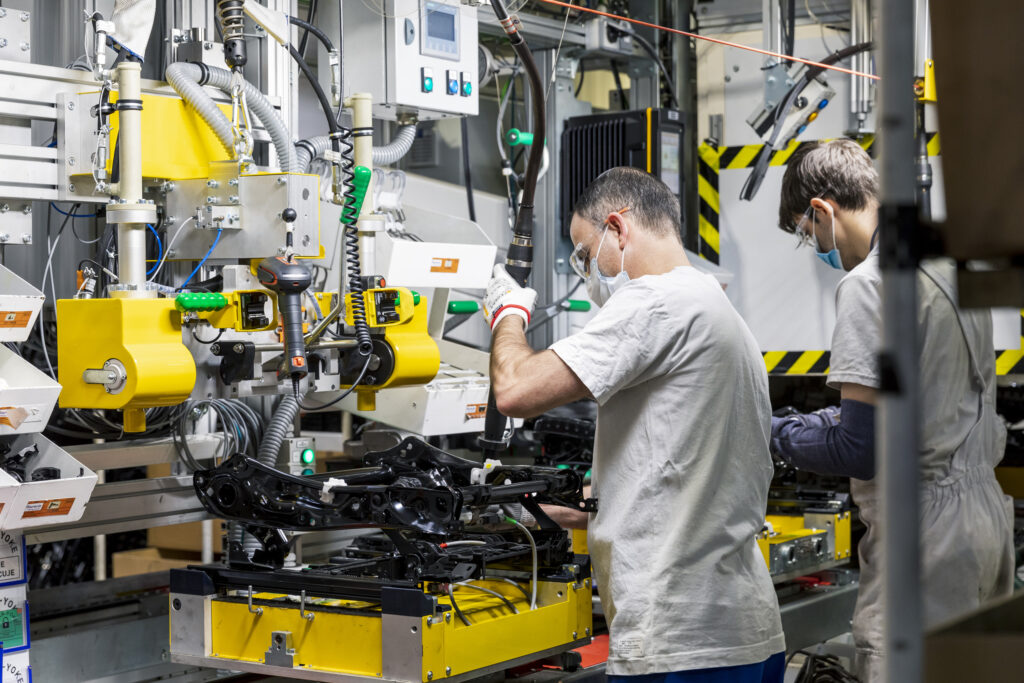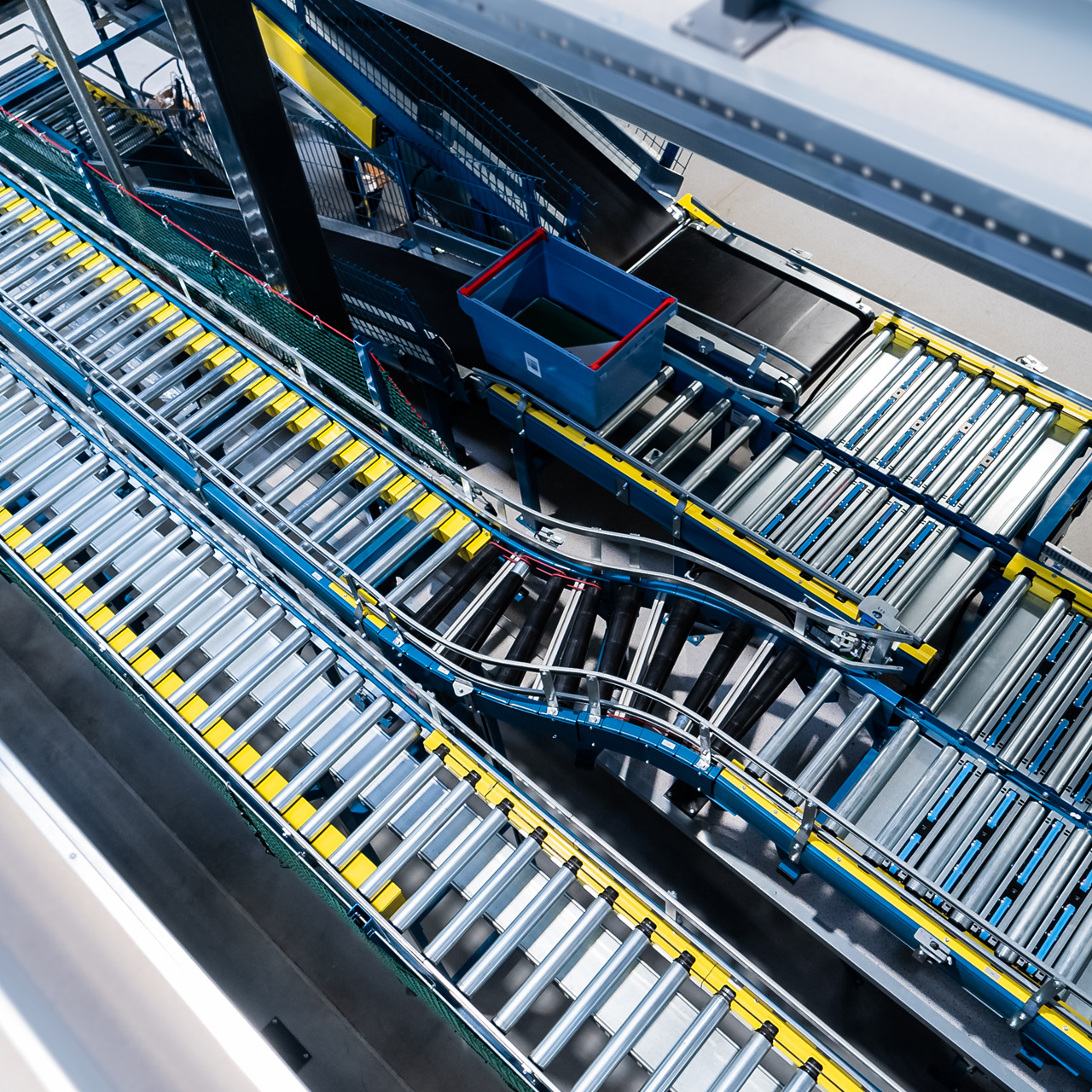OF PEOPLE & ROBOTS

In 2018, the American HR consulting company Manpower, published the Skills Revolution 2.0 report. It shows that 92 out of 100 managers don’t associate robotisation with job cuts. On the contrary – the surveyed management representatives believe that the implementation of robots will create completely new jobs. Qualified personnel will be needed to supervise the operation of autonomous machines.
Despite a spectacular development of technology, robots aren’t able to replace humans. Although we call these machines smart or intelligent, they only perform tasks that don’t require any creativity, risk assessment, social skills, or the interpretation of emotional states. This is where people are still irreplaceable.
Robots are increasingly used in all sectors of the economy. The fastest developments in robotisation can be seen in industrial manufacturing and logistics industries. More and more material handling processes in warehouses are carried out by Autonomous Mobile Robots (AMRs). The rapid increase in the number of progressively smarter machines raises concerns about robots taking jobs away from people. This fear is unfounded. According to analysts, robots will not only not reduce the number of jobs but – on the contrary – will contribute to the increase in employment numbers.
What are Autonomous Mobile Robots?
Autonomous Mobile Robots (AMRs) are self-propelled transport platforms. They carry out transport tasks in production halls and warehouses. They perform similar tasks to pallet trucks, logistic trains, and people manually moving loaded carts. The key difference is that they don’t need an operator. They work in shared spaces with people and other machine – this is a specific type of cobot.
The range of autonomy of mobile robots depends on the quality of the artificial intelligence they’re equipped with. In the case of VERSABOT robots this means independently choosing the shortest (fastest) route between collection and delivery points. An autonomous mobile robot is able to avoid dynamic and static obstacles. The safety systems that VERSABOT AMRs are equipped with ensure an immediate reaction to the threat of a collision with people or other machines. In both cases the reaction is to stop immediately.
What are the tasks of industrial robots?
AMR-class machines, like all other industrial robots, are included in those manufacturing processes where the following types of tasks take place:
- repetitive tasks – robots are introduced wherever it’s necessary to perform repetitive, monotonous, continuous tasks, which are devoid of creativity and are highly burdensome for people;
- potentially dangerous tasks – there are plenty of tasks in manufacturing processes that pose a risk of exposure to extreme temperatures or mechanical injuries – manual labour in these conditions is impossible or highly dangerous, while AMRs can operate at high and low temperatures, in poisonous fumes, dusty and smoky areas, and zones at risk of explosion without any problems;
- tasks requiring high strength, precision, and speed – unlike humans, machines don’t get tired, so they can handle heavy loads with constant speed and precision over time.
Implementing AMRs allows for the effective improvement of people’s work safety while also increasing the efficiency of transport processes.
Complementing intralogistic processes with AMRs

The AMR capabilities described above make them ideal for intralogistic processes. VERSABOT 500 and 1000 are able to carry out most typical internal transport tasks. They are equipped with modules that enable the transport of pallet loads, towing of dolly trolleys, cooperation with roller conveyors, as well as transport of frames on hangers (cooperation with monorail systems).
The potential of automation and the use of industrial robots, including AMRs, is being recognised by manufacturing companies all over the world. According to a 2019 report by the International Federation of Robotics (IFR), robot sales in Poland increased by about 40%. Forecasts for 2020 were at least as optimistic, however, the economy slowed down due to the pandemic. Despite all this, analysts predict that by 2025 companies will be spending about 35% of their budgets on process automation using robots, including AMRs. In Poland, the number of robots per 10,000 employees has been steadily growing: in 2019 it was 46 units. Market saturation is low: the European average is 114 robots per 10,000 industrial employees. It can therefore be assumed that the number of robots in Poland will grow rapidly in the coming years.
Will warehouse automation replace people
Fully automated warehouses already exist. E-commerce giants such as Amazon or Alibaba have built logistic centres and sorting facilities where only a small percentage of tasks is done by human personnel. In Germany, prototype factories are being built where people only perform supervisory functions as part of the development of Industry 4.0. At the same time, the number of cobots is growing – machines that don’t work in separate sectors, in steel cages or behind armoured glass, but in shared spaces with people. This group includes AMRs because they can cope perfectly in a dynamic working environment in warehouses and production halls.
A new dimension of the relationship between humans and robots is becoming a reality before our very own eyes. Smart machines aren’t replacing people but support them in carrying out dangerous and burdensome tasks. This allows people to undertake tasks that require creativity and give a real sense of satisfaction, Machines create opportunities for people to raise their qualifications – to perform supervisory and managerial jobs instead of manual labour.
Summary
VersaBox is a manufacturer of autonomous mobile robots that increase the profitability, manufacturing efficiency, and handling of warehouse processes. This is because machines are fully predictable, can operate non-stop with consistent efficiency and precision, and don’t generate labour or social costs. This doesn’t mean they are able to replace people.
In 2018, the American HR consulting company Manpower, published the Skills Revolution 2.0 report. It shows that 92 out of 100 managers don’t associate robotisation with job cuts. On the contrary – the surveyed management representatives believe that the implementation of robots will create completely new jobs. Qualified personnel will be needed to supervise the operation of autonomous machines.
Despite a spectacular development of technology, robots aren’t able to replace humans. Although we call these machines smart or intelligent, they only perform tasks that don’t require any creativity, risk assessment, social skills, or the interpretation of emotional states. This is where people are still irreplaceable.

